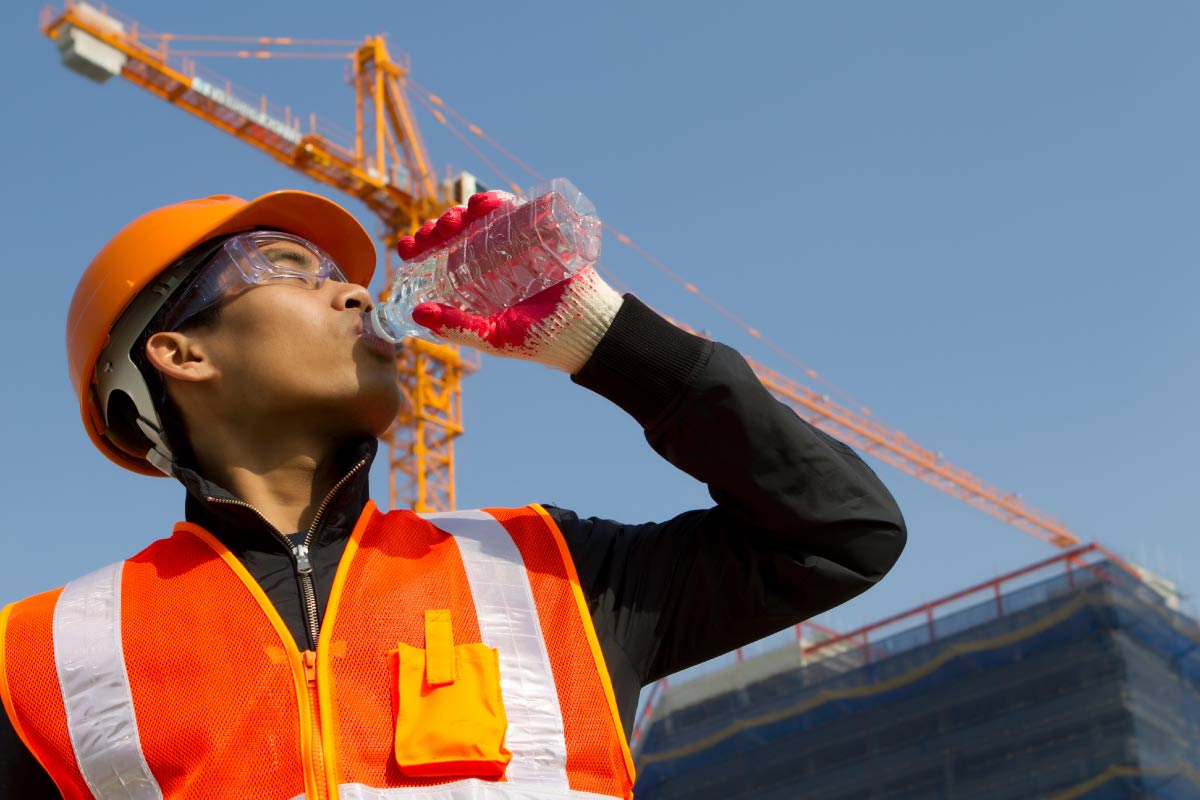Safety Tips – Part 1: Extreme Heat
Author: Erica Grilli
Beat the Heat: Field Service Safety Tips for Keeping Workers Safe

While the warm summer temperatures mean fun in the sun for most people, Field Service workers are out in the heat to perform the jobs that help keep their organizations running and their customers happy. It’s easy to forget the hazards that come with soaring temperatures and humidity when most people can easily stop what they’re doing outside to nip into the shade or go somewhere cooler, but for workers out in the field heat and humidity can be a serious health hazard.
Extreme Heat
So, knowing the signs and symptoms of overheating is vital for workers in the field. Workers should never be alone if at all possible, and partnering veteran workers with more inexperienced workers may be particularly helpful when temperatures soar.
Signs of heat exhaustion can include:
- Heat rash
- Excessive sweating/clammy skin
- Flushed complexion
- Weakness/fatigue
- Dizziness and/or confusion
- Muscle cramps
- Nausea and/or vomiting
Signs of heat stroke can include:
- Rapid pulse
- Reddish skin that is dry and hot to the touch
- Lack of sweating
- Above-average body temperature
- Chills
- Confusion/slurred speech
- Unconsciousness
If a worker exhibits any of these signs and symptoms, they should seek ways to cool off and/or get medical help immediately.
Staying Safe
Educating Field Service workers on signs and symptoms of heat-related illness is a great first step, but there are other precautions that go a long way in keeping them safe.
- As previously mentioned, partnering up is incredibly important in the extreme heat; schedule more frequent breaks and allow workers to switch out as needed.
- Provide shade and hydration; portable canopies are a great way to give workers a shaded place to recover from the sun, and supplying water, sports drinks, or a few extra dollars to purchase them can encourage workers to stay hydrated.
- Prompt workers to wear light-colored protective clothing and sunscreen, or consider providing them; the benefits of sun and UV awareness can easily be added to overall heat safety training.
- Increase the frequency of vehicle maintenance during the hottest months; don’t leave workers stranded if they need emergency assistance due to the extreme heat.
- Schedule more frequent check-ins with dispatchers or management; ensure Field Service workers have an easy and reliable way to communicate.
- Workers with particular health conditions, or on certain medications are at a higher risk of heat-related illness or injury and should speak with their physicians; provide information on these increased risks to boost employee awareness.
- Keep workers up-to-date with the daily heat index and contact them immediately with any relevant weather or heat alerts.
- Reschedule non-essential work on days with the most extreme heat; if this isn’t possible, ensure that your workers are taking the strictest precautions and are constantly monitored.
Along with these field service tips having heat safety protocol in place, providing training to deal with extreme heat before it hits, and reinforcing that training on the hottest of days will keep workers safe while they’re in the field.
For more helpful insight on Field Services, contact our experts to ensure your FSM solution is helping your technicians beat the heat.
Search
Trending Topics
- E22: Introduction to Field Service Personas – Java With Sugar Podcast
- The Role of Customer Success in a Professional Services Organization: A Path to Achieving Business Goals
- Addressing Customer Success Challenges in Today’s Market
- Field Service Efficiency During Workload Variations
- Working With and Without Asset Lifecycle Management
- E21: Trends & Future Options for ALM – Java With Sugar Podcast
- Building Better Habits to Ensure Maximum Dispatch Productivity
- E20: Leveraging Maintenance Plans & IoT for ALM – Java With Sugar Podcast
- E19: Introduction to Asset Lifecycle Management – Java With Sugar Podcast
- E18: Click FSE Migration to Salesforce Field Service – Java With Sugar Podcast
